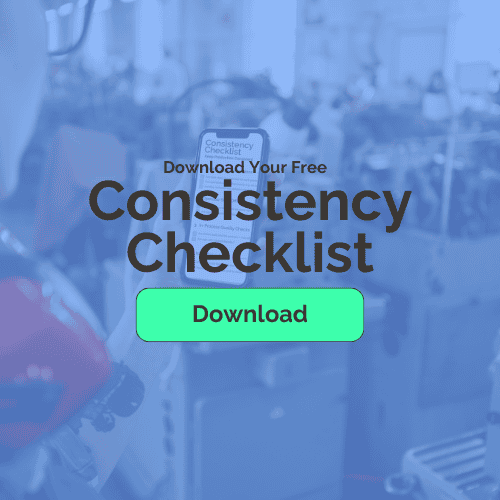How to do Manufacturing Capacity Planning

Every successful business has its own methods of achieving. More likely than not, if you have a successful business, you probably have high demand and make excellent profit from it. However, you can have as many clients lined up as you wish, but are you in control of your manufacturing capacity? In other words, can your manufacturing process keep up with demand and within customers’ timelines?
Businesses are so focused on constantly boosting sales and growing the business, they often forget about ensuring the manufacturing part can keep up with the selling part.
Manufacturing capacity planning is the process of ensuring the amount of materials, capacity, and demand align and balance each other out. In this video, we’re going to explore six ways you can perform capacity planning in your manufacturing process to ensure you meet the demands of your customers, while making the revenue you need.
There are 4 main Capacity Planning techniques to help you prepare to meet order demand, and we’ll cover each one in more detail in this post.
Overall Factors
Manufacturing Capacity Planning using Overall Factors (CPOF) is the simplest, roughest method of capacity planning:
- It uses accounting data only.
- Taking historical order demand data.
- It estimates overall labour and machine hour capacity requirements.
- Plans are usually done on a weekly or monthly period.
Pro’s
- Minimal Data requirements.
- Easy calculation.
Cons
- Inaccurate if there are long lead times or lots of WIP.
When To Use It
- When product mix & labour division across work centres remains constant.
- Just In Time Manufacturing where lead times are short and WIP is low (inaccuracies in the method are minimised).
Capacity Bills
This is still a rough estimating method but captures capacity across work centres better.
BOM, routings and standard times for each operation are required.
Labour and machine data is required for each operation.
Add up the total standard time for every item in the BOM.
Split this time across the work centres and combine with the Master Production Schedule order quantities to calculate capacity for each work centre & overall.
Data can come from engineering measurements, or accounting data.
Pro’s
- This method is useful in identifying production output restrictions at specific work centres.
- Also good when order volume is not constant – i.e. is cyclical.
Resource Profiles
This takes capacity bills data and adds time phasing i.e. scheduling one operation after previous sequentially.
Total workload remains the same, but the capacity requirement at each work centre changes (usually reduces), enabling you to optimise each work centre by loading more work.
Pro’s
- Better estimate of capacity for work centres.
Con’s
- More complex calculation.
When To Use It
When you’ve got more work centres, or when you’ve got under / over utilised work centres.
Capacity Requirements Planning (CRP)
Not a rough estimate, this is a real time planning method using live MRP data.
Pulls in data from the MRP system for materials, lead times, stock availability, WIP, scrap and other usage.
Needs all data mentioned previously – BOM, routing, standard times – Plus – MRP planned orders, stock and work centre WIP data.
Pro’s
- More accurate than rough estimate methods over shorter time periods because of real time data.
Con’s
- Requires an MRP system.
- Requires more data, and more complex calculation.
And now, linked to capacity planning is production scheduling, which uses a capacity planning method to plan out a detailed production schedule.
Finite Capacity Scheduling
Takes the CRP method and adds all order data from the Master Production Schedule. It then slots in orders when they can be completed, based on the availability.
If there is an under capacity problem, it will schedule in orders as soon as possible, which may lead to orders being planned after they are due. It would be up to the system user to increase capacity to complete orders on time.
It simulates jobs starting and stopping to create a detailed schedule, and loads all jobs into work centres for the duration of the plan.
Advanced Production Scheduling
Scheduling becomes more complex when you need to schedule products using component parts with a complex build schedule.
I.e. if all components for a product are 90% complete, nothing can be completed, because the product requires all to be 100% complete.
Fininte planning systems handle this by adding extra time or budget for additional capacity, leading to under utilised systems.
Advanced Production Scheduling systems (APS) are finite loading systems that handle the entire product, including all component parts to build a comprehensive production schedule.
Why Use APS?
An APS can lead to significant reductions in lead time and inventory, sometimes up to 85%.
Summary
There are several methods for manufacturing capacity planning:
- Overall Factors – simple for JIT with low WIP & constant order volume.
- Capacity Bills – handles varying order volume.
- Resource Profiles – accounts for longer lead times.
- Capacity Requirements Planning – most accurate method for short and medium term.
And 2 production scheduling methods:
- Finite Capacity Scheduling – basic scheduling method based upon CRP.
- Advanced Production Scheduling – when products include complex BOMs with manufactured components.
Unleash the Power of Digital Manufacturing
Download our free Digital Transformation Starter Kit to set the gold standard for operational clarity and excellence.





Capacity planning in a manufacturing industry is most essential method which determines the production process. It has so much benefits and this article has very neatly explained all the concepts. Thank you for the informative blog.